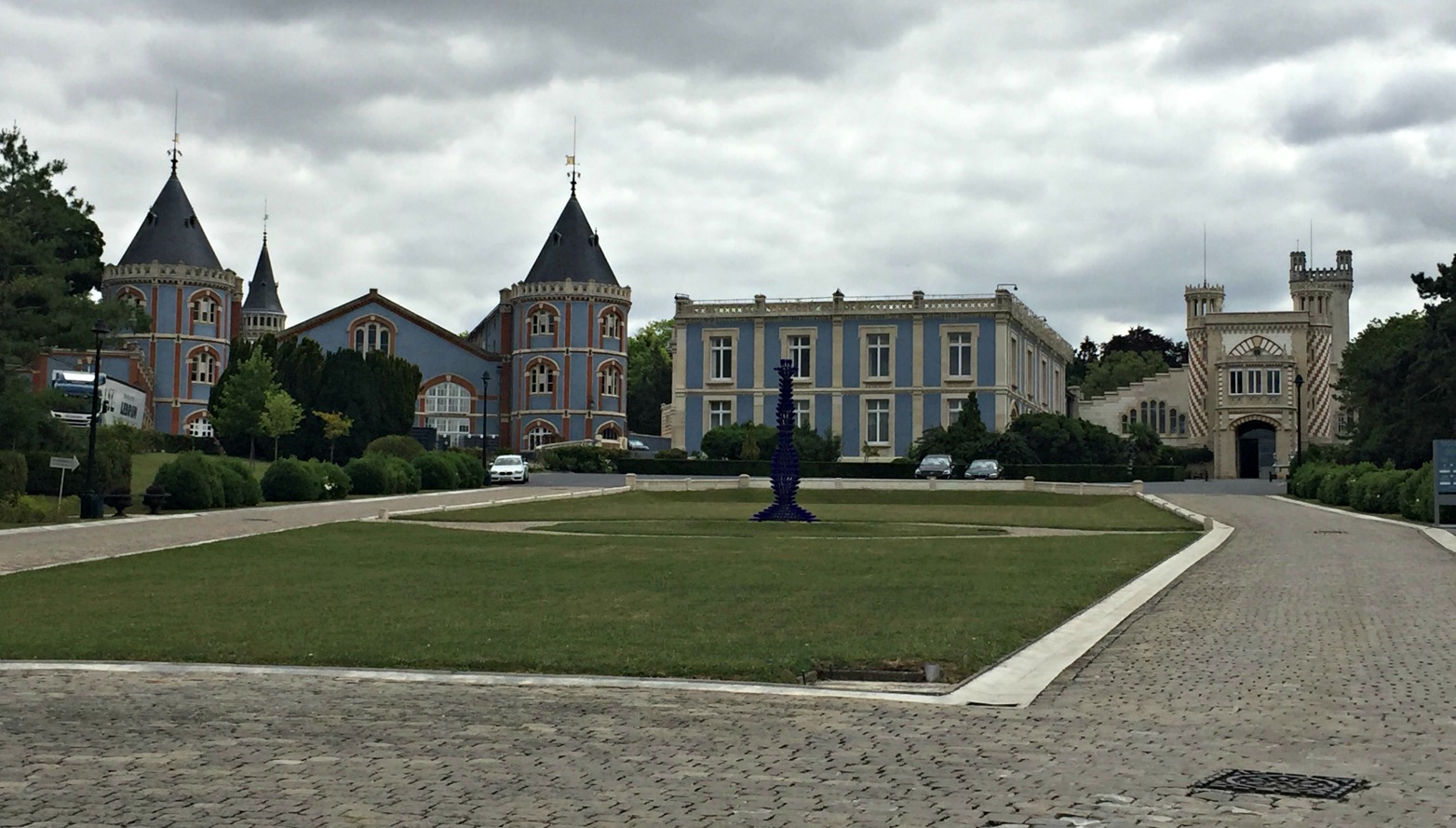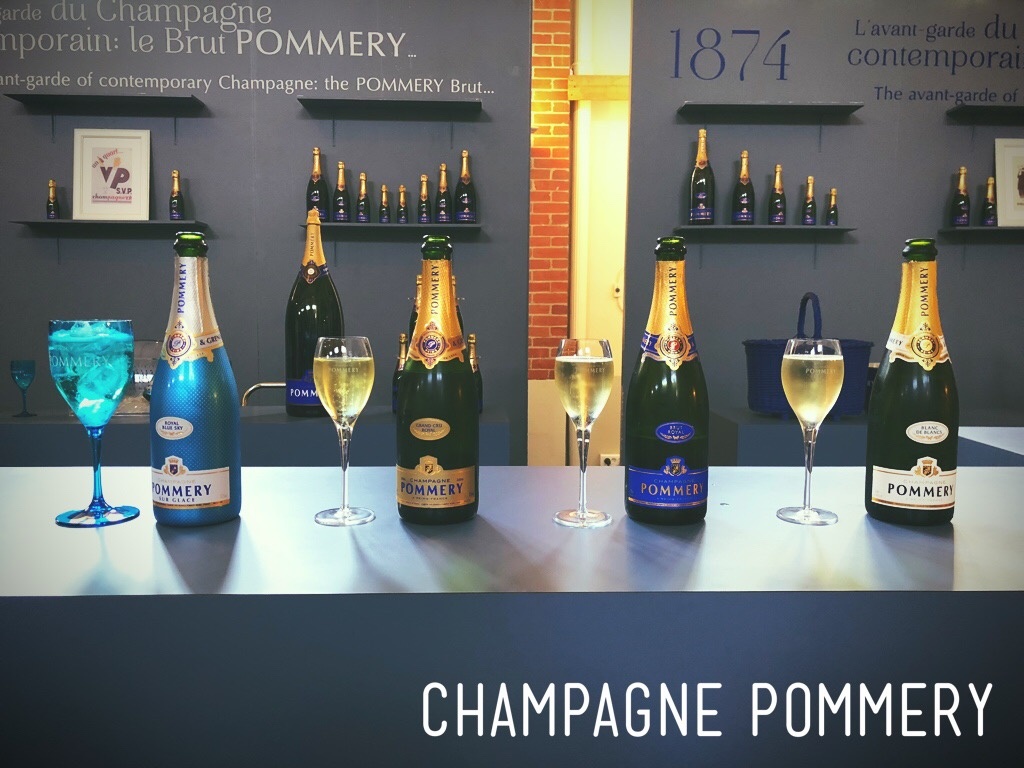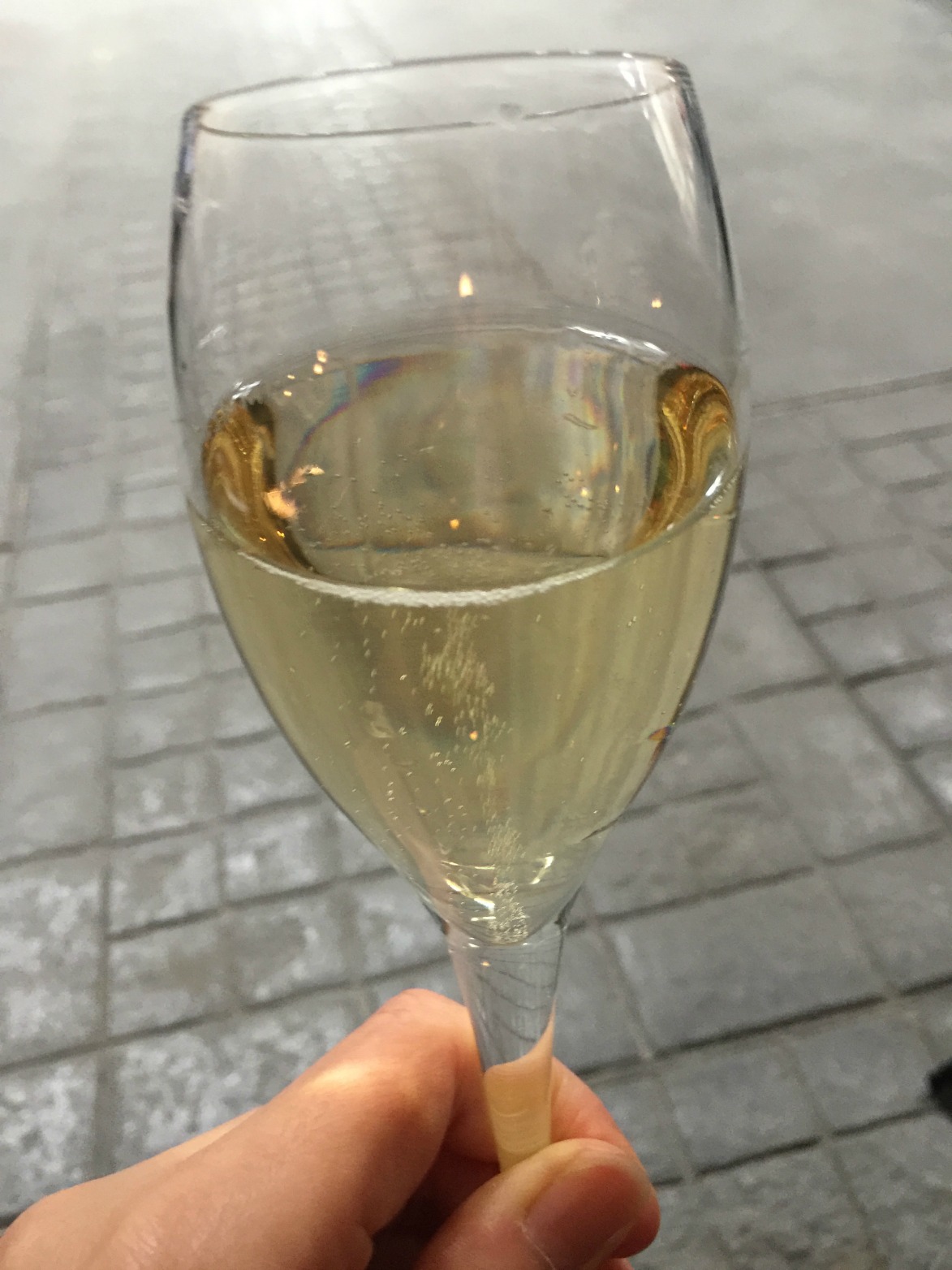Champagne Pommery:
One of my favorite Champagne Tours

Champagne Pommery estate has always been my favorite cellar to visit with out of town guests. It sits on a beautiful park and its buildings, reminiscent of an 18th century English castle, have intrigued me ever since I was a little girl. The cellars always impressed the first time visitor, with the steep staircase to go down the galleries, the height of the “crayeres” (Chalk pits), or the art work displayed along the visitor path.
I had the chance to go back this summer and I am happy to share with you my visitor experience.
Champagne Pommery truly blends art with wine science
First you are welcomed into a huge hall where one of a kind art pieces entertains you while you wait for your tour to begin.
The “Grand foudre”d’Emile Gallé, a humongous and sculpted oak barrel that can contain 75,000L or the equivalent of 100,000 bottles.
It takes 116 steps to access the renowned Champagne Pommery cellars
The beginning of the cellar tour starts by a short introduction before the theatrical opening of the double doors inviting you to go down 116 steps. It is dark, and becomes damper as you walk down; and yes it smells like in a typical cellar, a mix of mushroom, earthy notes.
Then the guide takes you through the galleries, which were dug in Roman’s time. Mme Pommery created the estate in 1868, after her husband's passing. She was one of the pioneers who took advantage of the site's chalky underground to create a gallery network of about 20 kms and 30 meters below the surface. At this depth, the cellar keeps a constant temperature (around 10C/50F) and high humidity all year round, hence the earthy/mushroom notes welcoming the visitors. The nodes of this network, called crayères, are huge chalk pits providing the necessary ventilation for underneath.
The making of Champagne wine is briefly explained as we walk through the bottles of wine aging on lees, first laid flat and then placed on “pupitres” on which the wine bottles are riddled to bring the empty deposit close to the closure and aperture and ready for disgorgement.
Read my article on Champagne wine making to learn more about this process
Along the visit path, you can notice drawings on the wall, left-overs from a previous art exhibit, permanent and temporary sculptures. The guide shares that Mme Pommery and her daughter Louise were fond of art and patrons of upcoming artists. The financial support of artists is still at the heart of the company values, which hosts exhibits every year in the cellars.
The visit ends by walking up the 116 steps and an invitation to the tasting bar. The tour took about an hour and our guide was very knowledgeable.
Champagne Pommery hospitality: an opportunity to enhance the wine tourist experience
I would say that the tasting bar is the part that could be improved. We arrived at the bar and had only one tasting sample offered (for a 26 euros entry ticket!). I chose to taste Champagne sur glace, the blue bottle, a demi-sec wine served on ice in a plastic blue glass. Residing now in the USA, I recognized the attempt to appeal to the American sweet tooth. The wine flavor was definitely tampered by the ice and the experience was disappointing, as I was expecting more flavors. My husband chose to taste the classic Brut (blue label) and was very pleased by the sensory experience, so did our out of town guest.
While it is important to keep wine intake in moderation, the tasting bar hospitality could be enhanced, with more samples to taste, more educated conversations with the bar tender, or by sharing some tasting notes on each wine.
I have toured many wine cellars in the US, Canada, Chile, South Africa, Australia, or New Zealand. 80% of the time, wine sampling is free of charge and the bar tender may be limited to 4 samples of 2 oz. The remaining 20% are charged for special vintage tasting or unique food and wine pairing tastings.
French wineries, small or corporate, have unique opportunities to improve their cellar visitor experience as many academic studies have shown the positive impact on building visitor loyalty if not to the brand, at least to the wine region.
Overall, touring Champagne Pommery remains one of my favorite experiences to share with my guests
To book your Champagne Pommery tour, visit their website
Other suggestions for cellar tours can be found on these sites:

















